From the turn of the century art, graphic design, architecture and interiors headed towards a theme of glamorous modernity. Art Deco items represented luxury and a confidence in the progress of technology and social enlightenment, emerging across all aspects of life from community buildings through to everyday objects in the home. Now reaching one hundred years old, many original Art Deco items may be facing deterioration – most often from the many different locations they may have been kept in over the last century and the accidents or heavy usage they may have faced in their lifetime.
 Above: an Art Deco work on paper featuring an Asian screen and the many influences of Eastern design history
Above: an Art Deco work on paper featuring an Asian screen and the many influences of Eastern design history
Art Deco items can be restored and preserved with the same professional treatments used to protect far more historic items, with each technique tailored to the specific materials and vulnerabilities of the unique object or artwork. At Fine Art Restoration Company we are on hand to offer professional conservation and repairs to all manner of art deco items, including furniture, paintings, sculptures, posters, works on paper and even the more unique items which may have very precise needs. Our trained team is highly skilled when it comes to the care and historically accurate restoration of such pieces, whether they require gentle cleaning or more thorough repairs to their structure.
 Above: a detail of an Art Deco metal design featuring a typical geometric pattern
Above: a detail of an Art Deco metal design featuring a typical geometric pattern
In this article we would like to share with you some of the most popular antiques found in the art deco style, also including their risk factors and the ways in which they can be professionally restored in our studio.
What is Art Deco?
The term Art Deco can be traced back to 1925, following the International Exhibition of Modern Decorative and Industrial Arts which was held in Paris. This magnificent event was created by the French government to celebrate new styles in art and architecture, including furniture, decorative arts and fashion throughout Europe and the rest of the world. Spanning from Les Invalides to the Grand Palais on both sides of the river Seine, over 15,000 people and companies exhibited with a total of sixteen million visitors over seven months. Within the exhibition there was a focus on ‘Style Moderne’ which was a particular focus for the Arts Décoratifs area, popularly becoming shortened to Art Deco.
 Above: a selection of posters from the era, including the London Underground, the Paris Exposition, Chicago World’s Fair & Vanity Fair
Above: a selection of posters from the era, including the London Underground, the Paris Exposition, Chicago World’s Fair & Vanity Fair
The most telling features of Art Deco design are the geometric shapes and rounded structured forms, which can be seen in many aspects of architecture and design from the period, including many of the skyscrapers in New York.
The materials of Art Deco show some of the first instances of furniture and interior design moving away from traditional styles and craftsmanship. Unique and often rare materials were used including aspects of ivory and ebony, as well as the iconic use of chrome plating and stainless steel which created the feel of true modernity during the interwar period. Art Deco may have also featured early use of plastics and synthetic materials, as well as new technology such as reinforced concrete structures and the invention of plate glass allowing for larger and stronger windows for impressive designs. Carved glass vases and decorative pieces were also popularised by René Lalique in this period – Lalique created unusual items such as glass hood ornaments for luxury cars alongside typical artworks.
 Above: a selection of Rene Lalique glass hood ornaments – these unique pieces may have faced various damages over the decades
Above: a selection of Rene Lalique glass hood ornaments – these unique pieces may have faced various damages over the decades
Popular Art Deco styles and antiques
Art Deco is a style found not only in art and interiors, but also in everyday items and the emerging technologies of the era. Due to the popularity of Art Deco style, looking after all objects will benefit both their value and preservation of a culturally important era, whether this is a decorative piece or a more unusual item such as a radio casing, office accessory or lighting fixture. As well as domestic interiors, the prominence and fashion of Art Deco also found its way into cinemas and ocean liners, making reclaimed or salvaged pieces from these surroundings unconventional yet much sought after.
 Above: an early illustration of an Art Deco interior from Salon D’Automne in 1914
Above: an early illustration of an Art Deco interior from Salon D’Automne in 1914
Art Deco posters and works on paper are favourable with collectors due to their early graphic design influences, these pieces are often collectible regardless of their subject matter, with early advertisements of everyday objects and products through to films and typical media. Typically Art Deco posters may feature popular entertainment such as the Ballet Russes or Moulin Rouge and even early advertisements of the London Underground, as well as magazine art for Vanity Fair and Harper’s Bazaar. Community or national campaigns and projects may also have popular prints and posters, such as the World’s Fair or US Work Progress Administration which published pieces encouraging literacy, health, the arts and civil duties.
 Above: a selection of posters produced for the US Works Progress Administration
Above: a selection of posters produced for the US Works Progress Administration
Famous names from the Art Deco design period include:
- Leon Bakst
- Pierre Fix-Masseau
- Louis Icart
- C. Paul Jennewein
- Erté
- Viktor Schreckengost
- Josef Hoffmann
- Jean Dunand
- Rene Lalique
- Jean Dupas
- Walter Dorwin Teague
- Cassandre
- Paul Manship
- Lee Lawrie
- Eileen Gray
- Emile-Jacques Ruhlmann
Whilst much of Art Deco style is based on simple geometric lines and shapes, it also calls back to typical classical ideals and styles with a twist of modernity. This was due to the many excavations taking place in the period, with archaeologists uncovering more of Pompeii, attempting to discover Troy, and opening the tomb of Tutankhamun which compelled the field of Egyptology. Further interests in travel would explore Asian, African, Aztec and Aborigininal motifs in many pieces, including sculptures and interior decorations. In paintings and works on paper, genres of art found in this period typically include Cubism, Futurism, Modernism and even Russian Constructivism. There is also much call back to Fauvism in the choice of colours throughout textiles and jewellery of the period.
 Above: a selection of Art Deco fan designs featuring the Eastern and ancient art influences of the era
Above: a selection of Art Deco fan designs featuring the Eastern and ancient art influences of the era
Art Deco care & restoration
The mixture of materials from the Art Deco era, as well as their old age, puts them at high risk from a wide variety of damages. Whilst metals may begin to tarnish, artworks on paper such as posters and original prints may face their own environmental dangers from fading and foxing. Art Deco items and artworks may also face accidental damage over the course of their lives, whether this is through heavy usage of a household item which was not originally seen as a valuable object, or through more recent breakages following a fall, a spillage or issues in transit.
 Above: paintings from the Art Deco era by Amedeo Modigliani, Wassily Kandinsky and Oskar Schlemmer
Above: paintings from the Art Deco era by Amedeo Modigliani, Wassily Kandinsky and Oskar Schlemmer
Metals
Metals require professional care if they are faced with growing levels of instability from corrosion, however they should also seek treatment from a trained conservator if they come into your care with any troubling signs of deterioration, as well as any build up of airborne particles and staining. This is certainly the case for metal sculptures which have always been kept outside or have been exposed to the elements due to inappropriate storage across previous decades. Many Art Deco sculptures may have found themselves in a city environment where the presence of pests and pollution may have worsened their surface contamination. Interior metal decorations and sculptures may have also faced this type of debris build-up from nicotine and open fireplaces over the decades since their creation. They may also see metal stringing or three dimensional structures loosening – especially if they are mixed with wooden elements as these may have warped over time or faced deterioration from failing old adhesives. For more information on caring for metals, please read our helpful guide here and for a case study on Bronze restoration please click here.
 Above: an Art Deco bronze sculpture with a marble base showing some signs of deterioration to the silver finish
Above: an Art Deco bronze sculpture with a marble base showing some signs of deterioration to the silver finish
Discoloured and contaminated metal artworks or specialist Art Deco items should be seen by a conservator to assess the treatments required for a safe restoration. Whether the metal has become tarnished, stained or faced airborne contamination it is important that cleaning is achieved with an appropriate solution which will not encourage corrosion or decay. Household chemicals and cleaning techniques can be damaging to historic items, especially those which may already be vulnerable in certain areas. Our conservators can clear away this type of disturbance with precise testing and treatment plans, bringing your treasured item back to life. When it comes to more drastic damage, such as broken areas and corrosion, deterioration can be halted and breakages restored into place with specialist conservation techniques, tailored to the specific needs of the sculpture or object.
 Above: the before and after of a Bronze restoration from our studio
Above: the before and after of a Bronze restoration from our studio
Paper
As one of the most vulnerable materials, paper can be affected adversely by a range of environmental issues. Controlling the way in which an Art Deco poster or print is kept will help to ensure that it survives into the future, this includes keeping a level atmosphere and avoiding direct light. High humidity may lead to foxing, that is rusty brown spots appearing on the surface, or encourage mould growth. A very dry atmosphere by contrast will make the paper brittle and lead to possible disintegration. Humidity levels of around 40% will be advised to keep your paper safe from these atmospheric dangers.
 Above: prints and photographs from the 1920s will be at the most high risk of fading or deterioration due to the atmosphere in which they are kept
Above: prints and photographs from the 1920s will be at the most high risk of fading or deterioration due to the atmosphere in which they are kept
Art Deco posters often use a printing technique which layers different colours in blocks, some of these pigments may be more susceptible to fading than others, leaving an uneven artwork and irreversible damage if left in direct sunlight due to harmful UV rays. This can be avoided with a shaded location and UV protective glass, which can be provided by our framing team. For very important Art Deco works on paper, it may be the case that they need heavily controlled lighting with little to no exposure for days at a time. Fading is one of the biggest causes for concern when it comes to paper artworks of this era as they are usually posters which were not originally intended to be kept as artworks, some of them may have historically faced open exposure for long periods or have disturbances along the edges and corners from display cabinets. For more information on poster restoration, read our article here about the various unique dangers they may face. As well as UV protective glazing, all paper should be checked for suitable framing and mounting. This is due to some older frames harbouring high acidity levels which may discolour and contaminate the paper over time. All framing conducted by our experts is ensured to be of a conservation standard.
 Above: a work on paper which has been discoloured and damaged by an acidic mount and backing board – before and after restoration by our team
Above: a work on paper which has been discoloured and damaged by an acidic mount and backing board – before and after restoration by our team
If your Art Deco paper artwork has faced damage from foxing, mould, staining or even more devastating deterioration such as tears and disintegration, our ICON accredited paper conservator is on hand to help. This includes restoration following frame contamination due to acids, tear repairs, surface cleaning to eradicate mould growth and foxing, and damage from household disasters such as floods and fires. All of these damages can be restored with extremely sensitive techniques, testing all aspects of the artwork to ensure that it can be treated without disturbing the original features.
 Above: a watercolour which has been damaged by mould, before and after restoration by our ICON accredited conservator
Above: a watercolour which has been damaged by mould, before and after restoration by our ICON accredited conservator
Stone, glass, wooden & unusual materials
The variety of materials found in Art Deco design and art can be numerous and sometimes involve mixed media. Luckily, our multifaceted team can handle diverse objects and artworks with specialist treatments for all manner of design aspects. Our specialists have training in their own fields, whether this is paintings, ceramics, furniture, paper or textiles, but they can also collaborate to produce the best outcome for unique restoration projects. This museum-level expertise is important as it will protect the piece going forward, as well as returning it as much as possible to its original finish with techniques in keeping with the era.
 Above: an early ornament from 1912 by Amedeo Modigliani with an African and Greek influence sculpted in Limestone & a 1928 stoneware bird sculpture by Séraphin Soudbinine
Above: an early ornament from 1912 by Amedeo Modigliani with an African and Greek influence sculpted in Limestone & a 1928 stoneware bird sculpture by Séraphin Soudbinine
For stone and glass items, our professional ceramics conservator is able to produce near seamless results following breakages. In this scenario, we recommend that all fragments are gathered together following an accident – allowing for the safe restoration of original pieces, maintaining historic and artistic integrity. In the case that some fragments cannot be salvaged, our conservation team can recreate missing areas with accurate finishes. For more information on caring for ceramics, as well as stone and glassware, please click here. Alongside traditional ceramics, our conservator can also professionally care for a range of materials including alabaster, ivory, onyx, and limestone
 Above: an oriental vase which was restored by our conservator, here you can see it in pieces (left) and in the process of bonding (right)
Above: an oriental vase which was restored by our conservator, here you can see it in pieces (left) and in the process of bonding (right)
Furniture repairs, including wooden ornaments and sculptures, can be completed in our studio with historically appropriate materials and techniques. This includes the use of era appropriate timber, sensitive treatments as not to disturb the original finish, and traditional staining, finishes and materials. Our team also offers professional textile restoration for damaged upholstery or fabric aspects of a design feature. For more information on traditional furniture restoration, please click here.
 Above: the restoration of a wooden surface which had been badly water damaged, our experts use precise techniques to stabilise and revive furniture
Above: the restoration of a wooden surface which had been badly water damaged, our experts use precise techniques to stabilise and revive furniture
How can we help?
If you have an Art Deco item or artwork in your care which may benefit from professional restoration treatments, please contact our helpful team who will be happy to assist further.
To make contact please email us via [email protected] or call 0207 112 7576

 Above: an Art Deco work on paper featuring an Asian screen and the many influences of Eastern design history
Above: an Art Deco work on paper featuring an Asian screen and the many influences of Eastern design history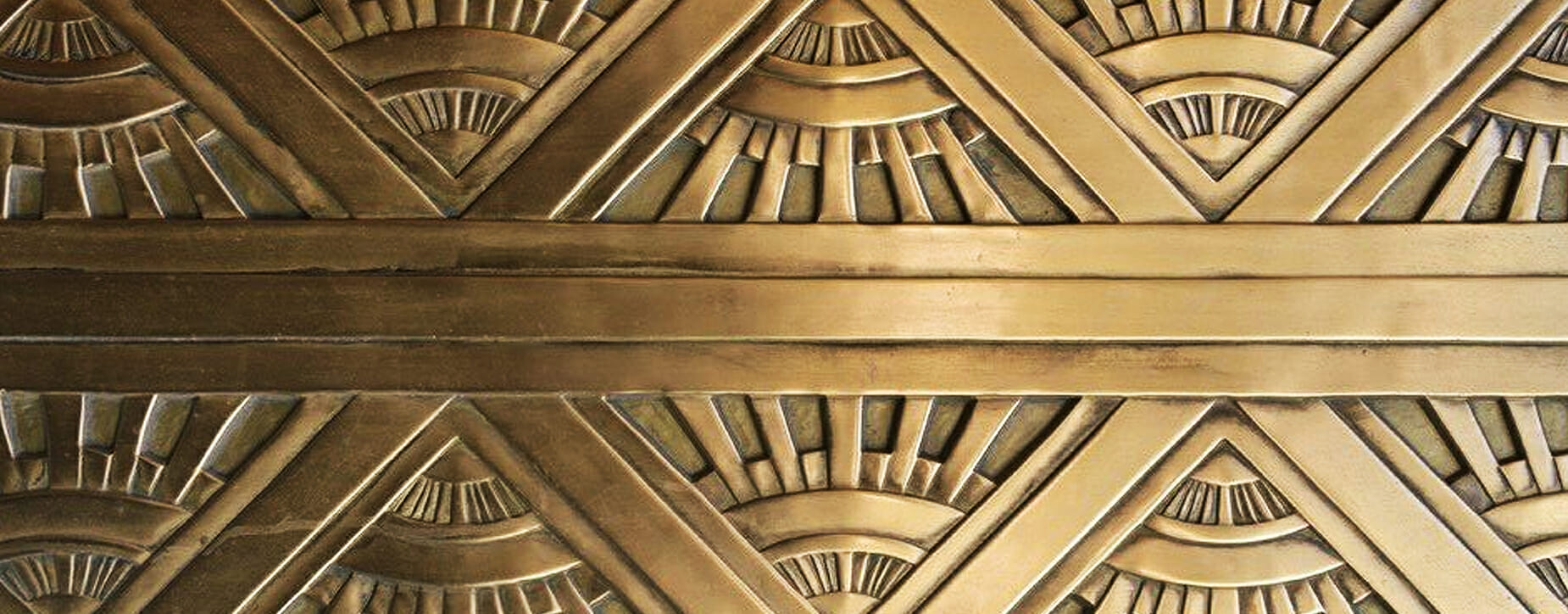 Above: a detail of an Art Deco metal design featuring a typical geometric pattern
Above: a detail of an Art Deco metal design featuring a typical geometric pattern Above: a selection of posters from the era, including the London Underground, the Paris Exposition, Chicago World’s Fair & Vanity Fair
Above: a selection of posters from the era, including the London Underground, the Paris Exposition, Chicago World’s Fair & Vanity Fair Above: a selection of Rene Lalique glass hood ornaments – these unique pieces may have faced various damages over the decades
Above: a selection of Rene Lalique glass hood ornaments – these unique pieces may have faced various damages over the decades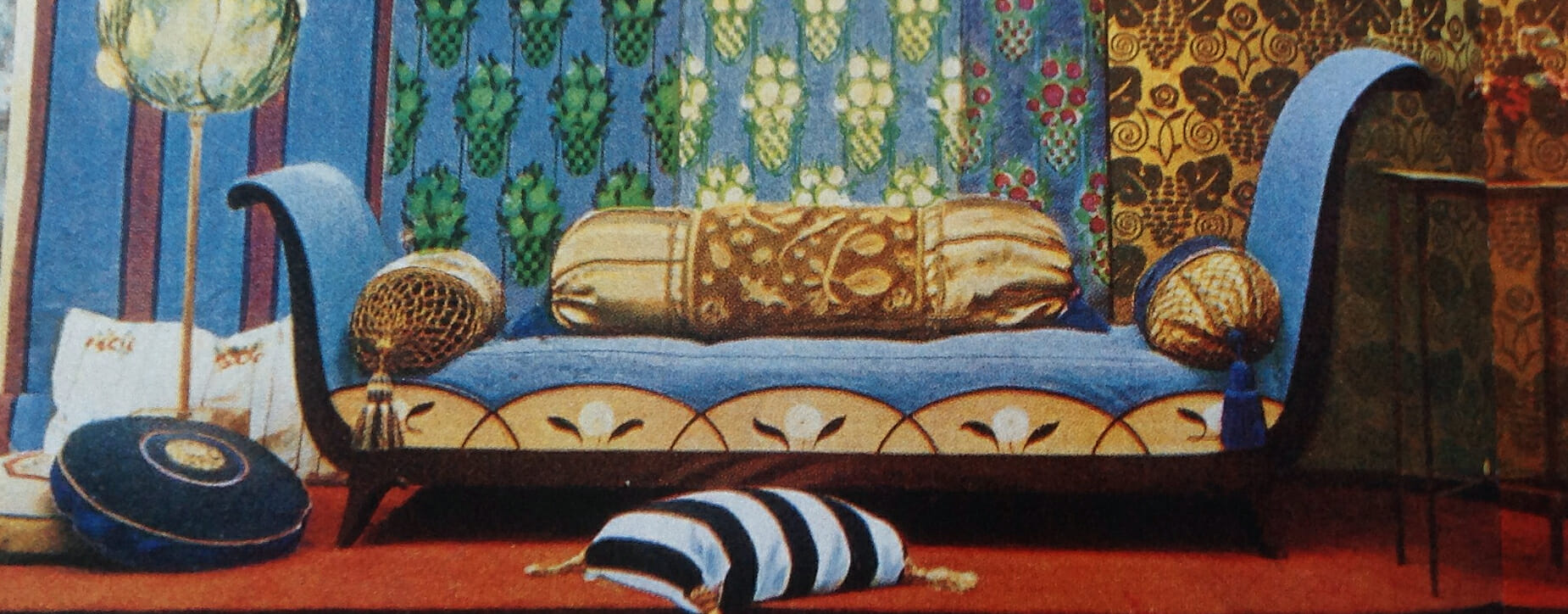 Above: an early illustration of an Art Deco interior from Salon D’Automne in 1914
Above: an early illustration of an Art Deco interior from Salon D’Automne in 1914 Above: a selection of posters produced for the US Works Progress Administration
Above: a selection of posters produced for the US Works Progress Administration 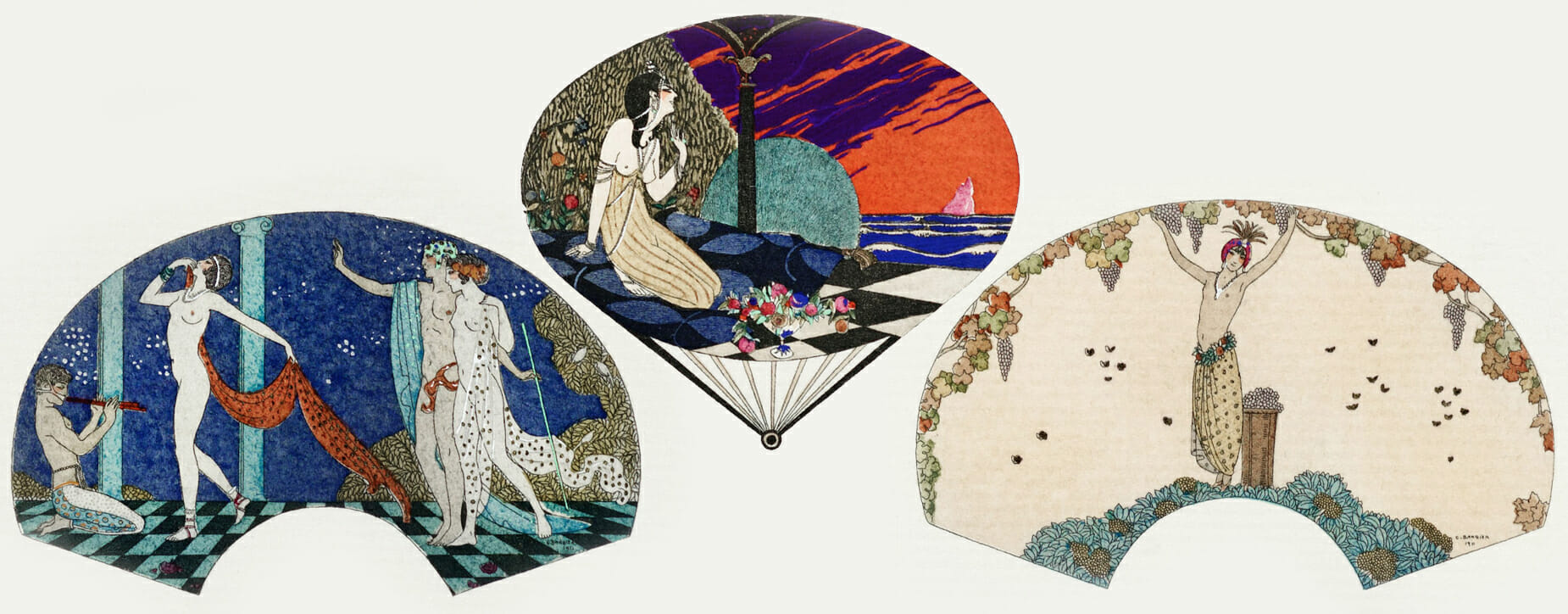 Above: a selection of Art Deco fan designs featuring the Eastern and ancient art influences of the era
Above: a selection of Art Deco fan designs featuring the Eastern and ancient art influences of the era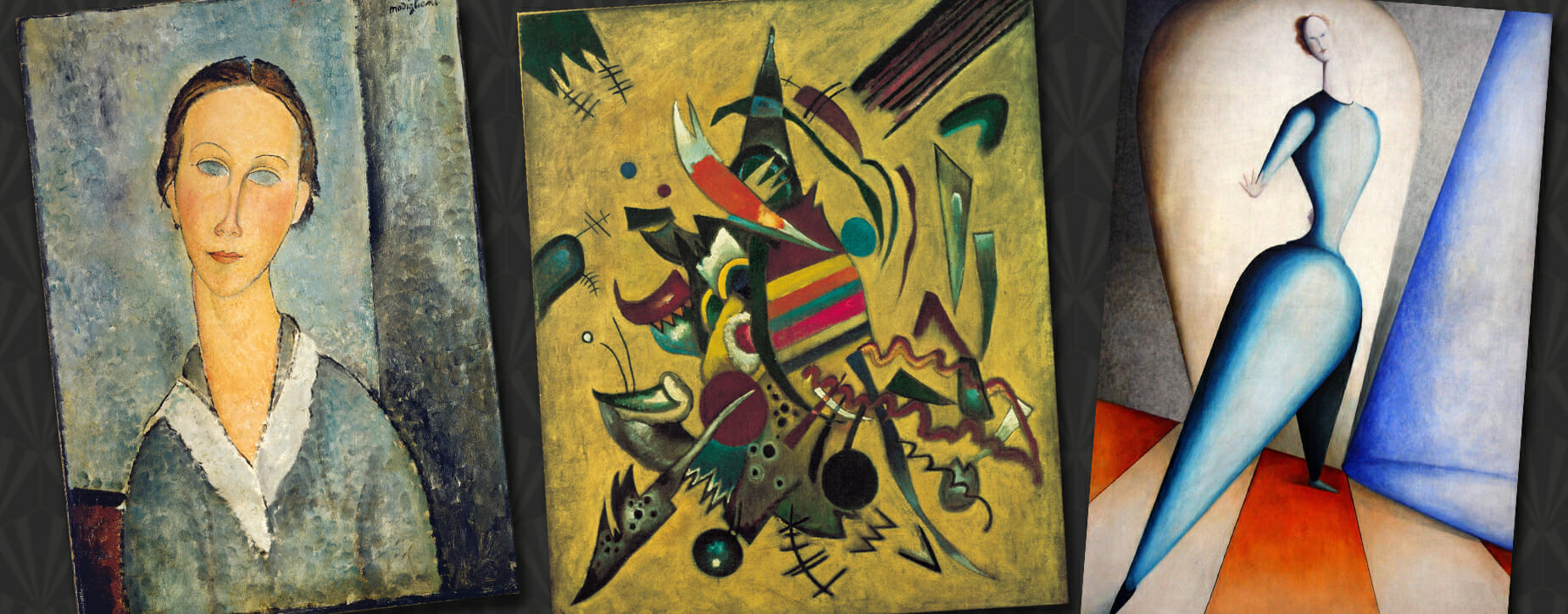 Above: paintings from the Art Deco era by Amedeo Modigliani, Wassily Kandinsky and Oskar Schlemmer
Above: paintings from the Art Deco era by Amedeo Modigliani, Wassily Kandinsky and Oskar Schlemmer Above: an Art Deco bronze sculpture with a marble base showing some signs of deterioration to the silver finish
Above: an Art Deco bronze sculpture with a marble base showing some signs of deterioration to the silver finish Above: the before and after of a Bronze restoration from our studio
Above: the before and after of a Bronze restoration from our studio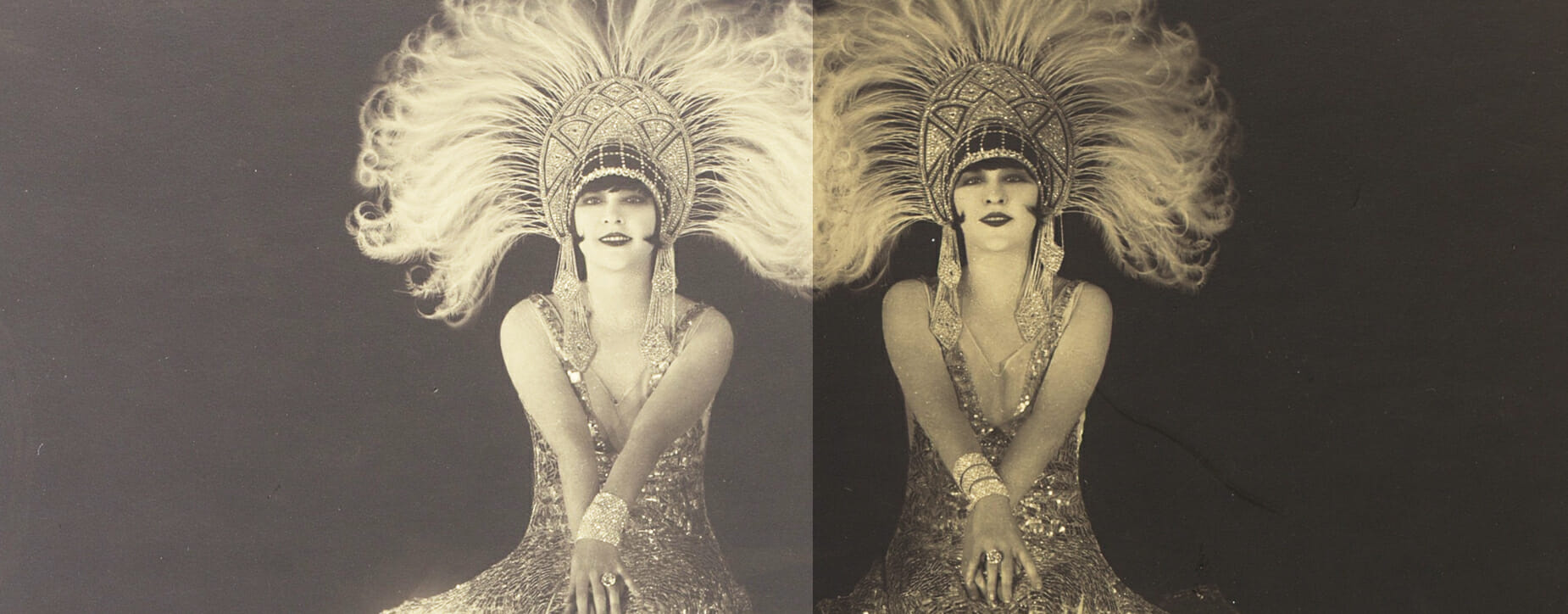 Above: prints and photographs from the 1920s will be at the most high risk of fading or deterioration due to the atmosphere in which they are kept
Above: prints and photographs from the 1920s will be at the most high risk of fading or deterioration due to the atmosphere in which they are kept Above: a work on paper which has been discoloured and damaged by an acidic mount and backing board – before and after restoration by our team
Above: a work on paper which has been discoloured and damaged by an acidic mount and backing board – before and after restoration by our team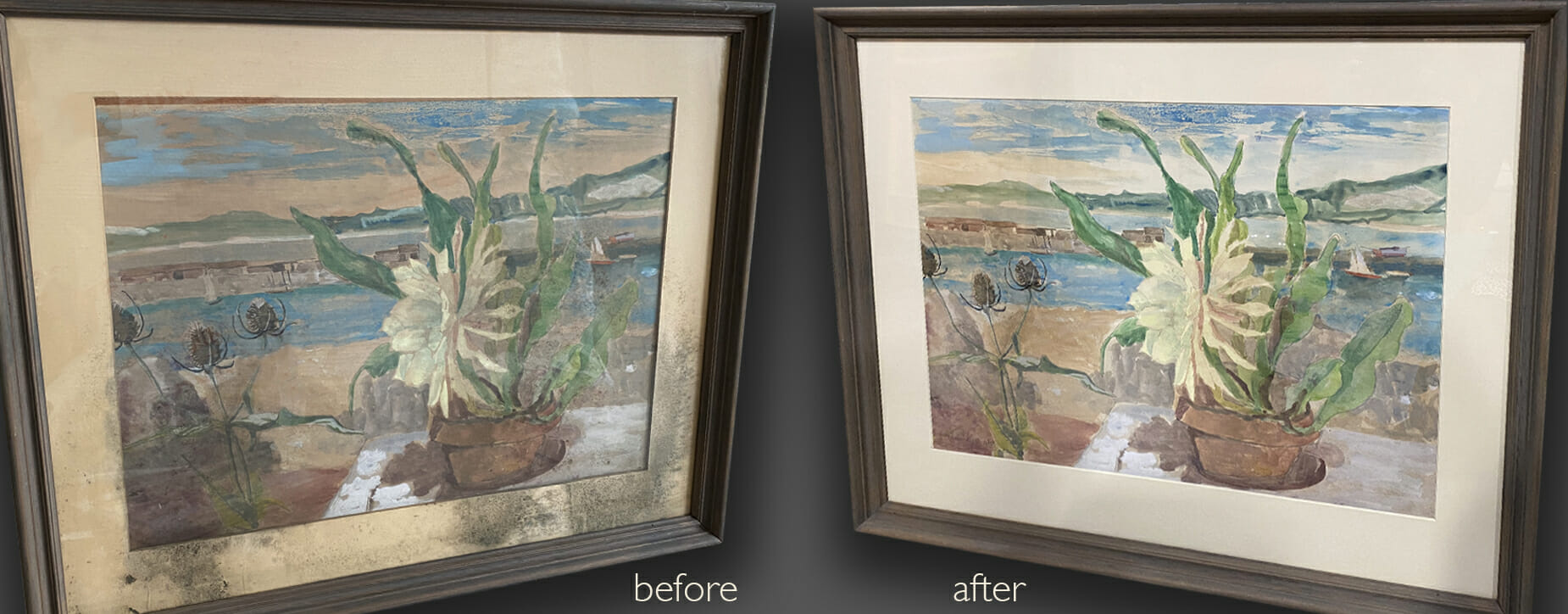 Above: a watercolour which has been damaged by mould, before and after restoration by our ICON accredited conservator
Above: a watercolour which has been damaged by mould, before and after restoration by our ICON accredited conservator Above: an early ornament from 1912 by Amedeo Modigliani with an African and Greek influence sculpted in Limestone & a 1928 stoneware bird sculpture by Séraphin Soudbinine
Above: an early ornament from 1912 by Amedeo Modigliani with an African and Greek influence sculpted in Limestone & a 1928 stoneware bird sculpture by Séraphin Soudbinine Above: an oriental vase which was restored by our conservator, here you can see it in pieces (left) and in the process of bonding (right)
Above: an oriental vase which was restored by our conservator, here you can see it in pieces (left) and in the process of bonding (right)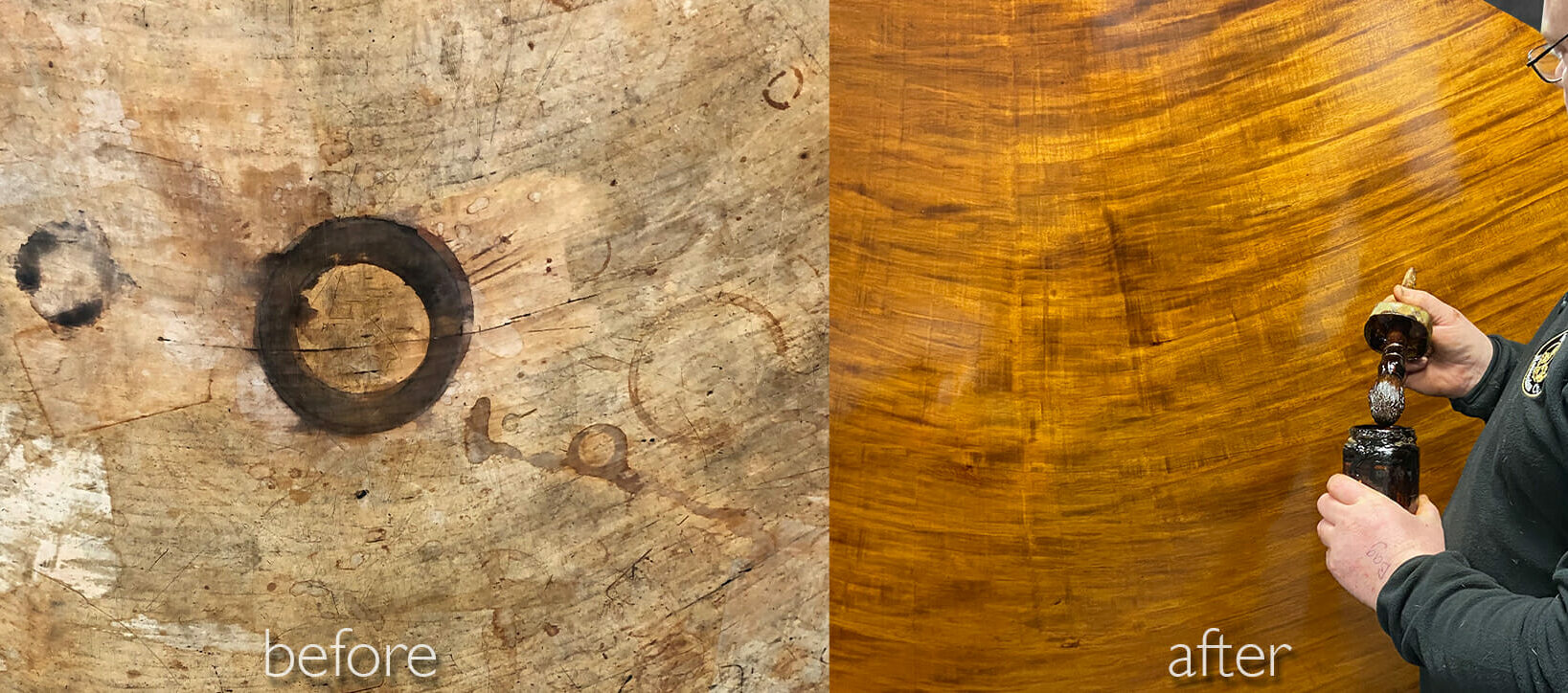 Above: the restoration of a wooden surface which had been badly water damaged, our experts use precise techniques to stabilise and revive furniture
Above: the restoration of a wooden surface which had been badly water damaged, our experts use precise techniques to stabilise and revive furniture 




